Anyone working hard in the gym to gain muscle and strength has probably asked themselves: How much creatine should I take?
Creatine is one of the highly researched and effective supplements in sports nutrition. It helps you to boost performance, build muscle, and speed up recovery. But the real question isn’t just if it works, it is: how to use creatine in the right way to see the best results.
This guide breaks it down simply: when to take creatine; how to take creatine; the best time to take creatine; and answers to questions i.e, how long does creatine take to work and how much creatine per day is right for you.
What Is Creatine and Why Is It So Popular?
Creatine is a natural compound found in your body, especially in muscles. You also get small amounts from foods like red meat and fish. But it’s tough to get enough from food alone to fully saturate your muscles. The creatine supplements play an important part here.
When you take creatine, your body stores more of it in your muscles. This increases your ability to produce quick energy during high-intensity workouts. Over time, this leads to more muscle mass, strength, and ultimately, better performance.
According to the International Society of Sports Nutrition (ISSN), creatine is one of the safest and most effective supplements for athletes and gym-goers alike (Kreider et al., 2017).
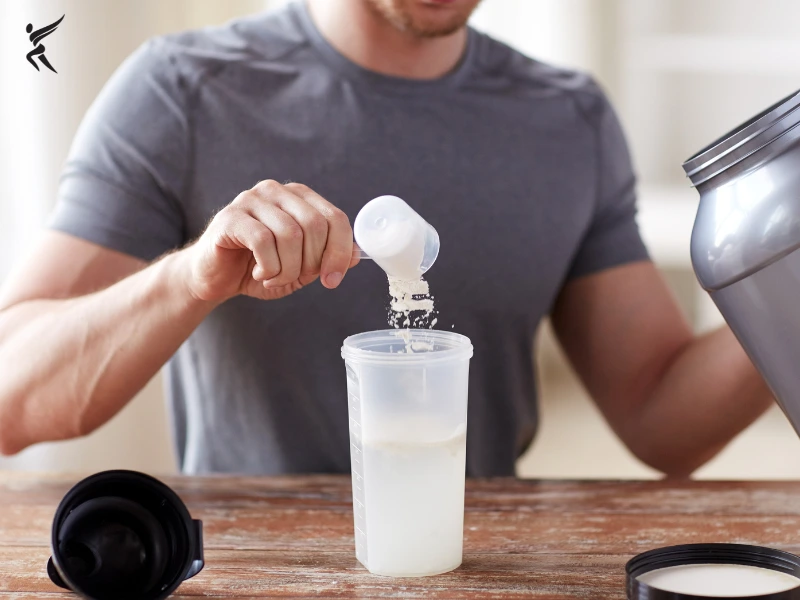
Visit: Best Pre Workout for Muscle Gain and Intense Pumps: Top Picks for 2025
Creatine Works – But Only If You Take It Right
Many people start using creatine without knowing how to properly take creatine. Some take random doses, some skip days, and others rely on small amounts in pre-workouts. That’s not enough.
To get the most from creatine, you need to know how much creatine per day you should take and be consistent with it. The two main approaches are:
Option 1: Creatine Loading Phase
This is the fastest way to saturate your muscles with creatine.
Here’s how to do it:
- Take 20 to 25 grams of creatine monohydrate per day
- Split into 4 or 5 smaller doses (around 5 grams each)
- Do this for 5 to 7 days
By the end of the week, your muscles are “loaded” with creatine, and you can switch to a lower maintenance dose.
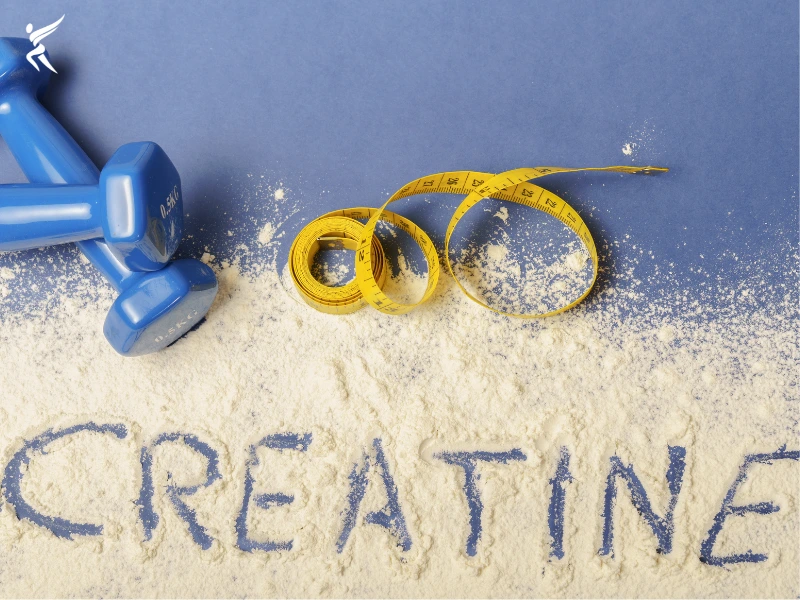
Discover: Top Chest Workouts & Dumbbell Exercises for Men
- Pros:
- Faster results
- Increases strength and size quickly
- Cons:
- May cause mild side effects like bloating or stomach discomfort
Recommended for:
- People who want faster results
- Bodybuilders or athletes in a loading phase
Option 2: Low Daily Dose (No Loading)
You can also skip the loading phase and go straight to the maintenance dose. This means taking:
- 3 to 5 grams per day
- For at least 28 days
Studies show that your muscles will still reach full creatine levels. It just takes about 3 to 4 weeks longer(Hultman et al., 1996).
- Pros:
- Fewer side effects
- Simple and easy to stick with
- Cons:
- Slower to see results
Recommended for:
- Beginners
- People sensitive to higher doses
So… How Much Creatine Should I Take?
Let’s answer this clearly.
If you want fast results:
Start with a loading phase: 20–25 grams/day for 5–7 days
Then, 3–5 grams/day for maintenance
If you prefer slow and steady:
Skip the loading phase. Just take 3–5 grams/day, every day.
Either way works; the key is consistency.
You can also calculate your loading dose based on body weight: 0.3 grams per kilogram of body weight per day.
For example, if you weigh 80 kg (176 lbs), you’d take: 0.3 x 80 = 24 grams/day during the loading phase.
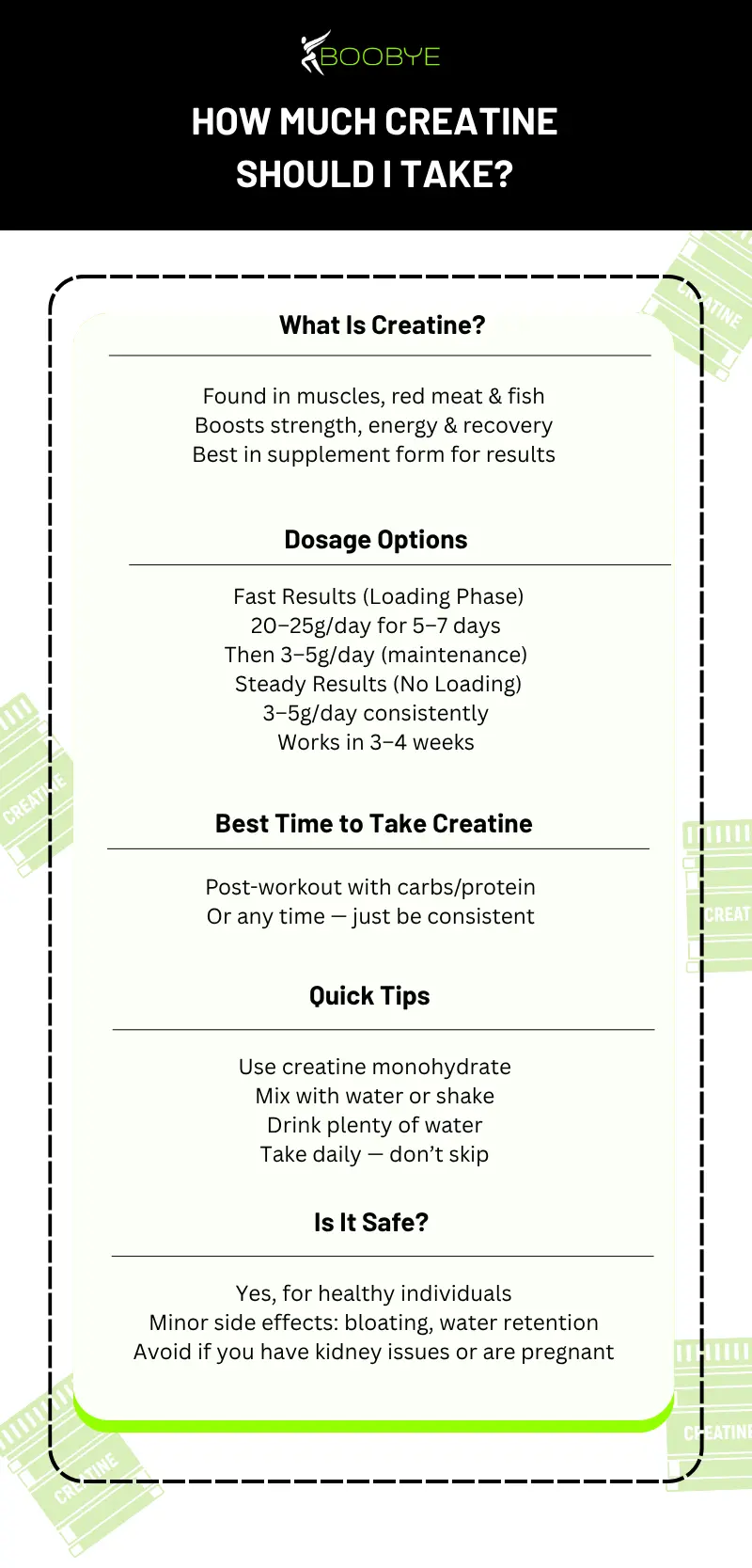
When to Take Creatine for Best Results?
Here’s another common question: When to take creatine?
The truth is, there’s no perfect time. What matters most is taking it every single day.
That said, research does suggest a slight edge if you take creatine after your workout rather than before (Antonio & Ciccone, 2013).
Explore: Abs Workouts and Core Exercises for Men and Women
Best time to take creatine:
- Post-workout, with carbs or protein
- Or any time, as long as it’s consistent
You can even split it, half before your workout, half after. But don’t stress too much. Again, daily use matters more than timing.
How Long Does Creatine Take to Work?
With the loading phase, most people see results in 7–10 days.
Without loading, you may start to notice benefits after 3–4 weeks.
Improvements include:
- More energy during lifts
- Better endurance during high-intensity sets
- Faster recovery between workouts
- Gradual muscle mass and strength gain
Keep your expectations realistic. Creatine is powerful, but it’s not a miracle. It works best alongside a solid training and nutrition plan.
How to Properly Take Creatine
You don’t need anything fancy. Just follow these simple tips on how to take creatine:
- Use creatine monohydrate – the most studied and reliable form
- Mix it with water, juice, or your protein shake
- Take 3–5 grams daily
- Stay consistent — don’t skip days
- Drink plenty of water to stay hydrated
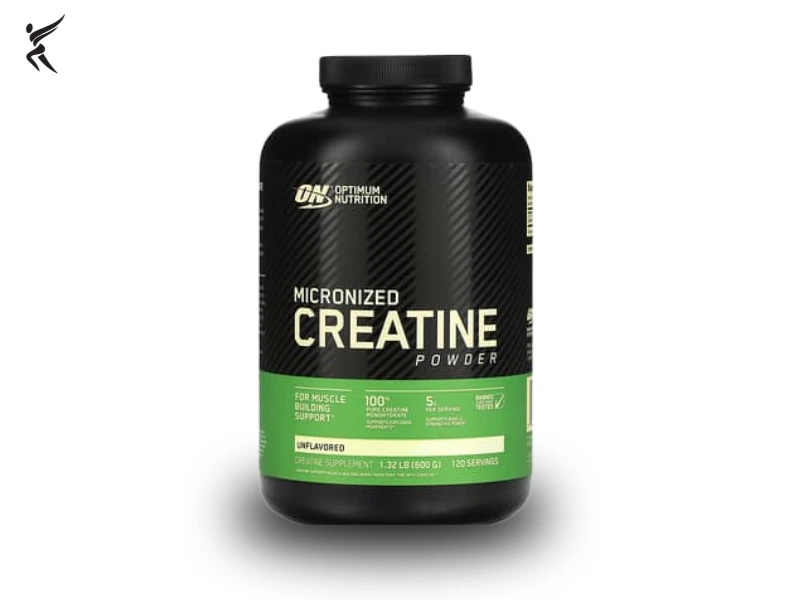
Bonus tip: Taking it with carbs or protein (like after a workout shake) may improve creatine absorption.
Creatine Dosage Based on Your Goals
GoalDaily DosageMethodFast saturation20–25g/day for 5–7 days, then 3–5g/day Loading + maintenance Slow saturation (low risk)3–5g/dayDaily low-dose Athletes/bodybuilders5g/day consistently Maintenance Lightweight individuals3g/day Adjusted dose
Is Creatine Safe?
Yes, creatine is safe for most healthy people, even when taken long-term. Studies have shown that taking up to 30 grams per day for 5 years is safe and well-tolerated (Kreider et al., 2017).
Possible side effects (though rare) include:
- Bloating
- Mild stomach discomfort
- Temporary water retention
These effects are usually minor and go away once your body adjusts.
Learn More: Create the Perfect Workout Routine for Women and Beginners
Creatine is not recommended if:
- You have kidney disease
- You’re pregnant or breastfeeding
- You have bipolar disorder
Always talk to a healthcare provider if you have medical conditions or take medications.
Can Women Take Creatine?
Absolutely. Women benefit just like men from creatine supplementation.
A 2021 review found that creatine helps women improve strength, lean mass, and performance, even without a loading phase.
Women on a typical omnivorous diet may also have lower baseline creatine stores, so they might respond even better to supplementation.
Common Myths About Creatine
Myth 1: Creatine causes kidney damage
Truth: No evidence supports this in healthy individuals
Myth 2: Creatine leads to dehydration
Truth: Actually, it may help with hydration inside muscle cells
Myth 3: You must “cycle off” creatine
Truth: Long-term use is safe; no cycling is necessary
What Happens If You Miss a Day?
Don’t worry. Missing a day or two won’t hurt your progress.
Once your muscles are saturated, creatine levels stay elevated for up to 4–6 weeks. Just get back on track and stay consistent.
Ultimately…
To wrap up, how much creatine should I take really depends on your goals, body weight, and preferences. Whether you choose to load or just take a steady dose, the key is consistency.
Here’s your quick checklist:
- Take 3–5g creatine monohydrate daily
- Start with a loading phase if you want faster results
- Post-workout may be the best time, but anytime is fine
- Use carbs/protein to boost absorption (optional)
- Drink plenty of water
- Stay on track for at least 4 weeks
Remember, creatine won’t make up for a poor diet or weak training. But if you put in the work, it can give you an extra edge; more power, more muscle, and better recovery.
